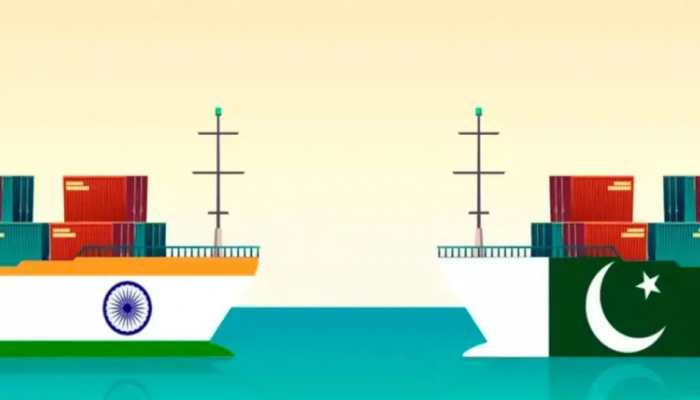Trading With The ‘Enemy’? Pakistan’s India Imports Soar As China Exports Crash, Exposing Diplomatic Double Game
A sharp $220.58 million worth of goods crossed into Pakistan from across the eastern border. Last year, it was slightly lower, $206.89 million. The year before that, it was at $190.04 million.
Trending Photos
)
New Delhi: The flags may not fly at borders, but the numbers tell another story. In finance corridors of Islamabad, a spreadsheet has been making rounds, one that shows something few expected this year. Despite frozen ties and public outrage, Pakistan imported more goods from India in FY25 than in any year since the 2019 fallout.
The value? A sharp $220.58 million worth of goods crossed into Pakistan from across the eastern border. Last year, it was slightly lower, $206.89 million. The year before that, it was at $190.04 million. The numbers are rising, and few in the ministries are willing to speak openly about it.
“People assume trade with India is dead. It’s not. It has moved underground into the technicalities. You can suspend official channels. You can block trucks. But you cannot stop market demand,” said a former trade official on condition of anonymity.
Pakistan’s exports to India, on the other hand, barely moved. Only $1.43 million worth of Pakistani goods went across this year. That imbalance, over $200 million in favour of India, was not only an anomaly. It became a pattern in a broader regional crisis.
The total trade deficit with nine neighbouring countries hit $12.297 billion by June 2025. Last year, it was $9.502 billion. The surge of 29.42 percent is no rounding error. And neither is the trend behind it.
Even a year earlier, the signs were there. FY24’s regional deficit had ballooned 49 percent from $6.382 billion the year before. Officials cited higher imports from China, India and Bangladesh as the main reason. That explanation has not changed. What has changed is the degree.
Imports from these neighbours, combined, climbed to $16.698 billion in FY25. The previous year, that number stood at $13.838 billion. Meanwhile, exports to these same countries barely crept up. $4.401 billion worth of Pakistani goods were exported to nine regional countries in FY25. Last year, it was $4.336 billion.
The difference is not only numerical but also political. “We are buying more than we sell. We are importing where we should be producing. That is a national weakness,” said a former Ministry of Commerce advisor.
Pakistan’s largest trade partner, China sits at the centre of this imbalance. Imports from Beijing alone hit $16.312 billion in FY25. The year before, it was $13.504 billion. And in FY23? Just $9.662 billion. It is a trend climbing faster than any manufacturing recovery in Pakistan can match.
At the same time, Pakistan’s exports to China have begun slipping. In FY25, the country shipped only $2.476 billion worth of goods to its largest economic ally. Last year, it was $2.709 billion. The drop of 8.6 percent may seem small, but inside Pakistan’s trade community, it has sounded quiet alarms.
“China’s demand is shifting. They are looking elsewhere for cotton, seafood and electronics. We cannot keep relying on the same export mix,” said a Karachi-based exporter who deals in bulk seafood shipments to Guangdong.
Elsewhere, there is some relief. Pakistan’s exports to Afghanistan, Bangladesh and Sri Lanka have shown signs of life in FY25. Those markets, long overlooked, are absorbing more Pakistani goods this year. But the volume is not enough to cover the yawning deficit with Beijing or the flow from New Delhi.
Nine neighbours – Afghanistan, China, Bangladesh, Sri Lanka, India, Iran, Nepal, Bhutan and the Maldives – make up the region. And in all, Pakistan’s trade gap with them is an economic issue and becoming political currency in a country still struggling to exit an International Monetary Fund (IMF) bailout cycle and a fragile post-election coalition.
The numbers do not lie. And neither does the silence. Behind closed doors in Islamabad, the murmurs are growing louder. Pakistan is losing not only dollars but leverage, market access and in many cases, public trust.
And as trade with India rebounds behind the scenes and China pulls the ladder higher with every passing year, a question begins to form in the markets – how much longer can Pakistan afford to import its way out of this crisis?
Stay informed on all the latest news, real-time breaking news updates, and follow all the important headlines in india news and world News on Zee News.
Live Tv



)
)
)
)
)
)
)
)
)
)
)
)
)
)
